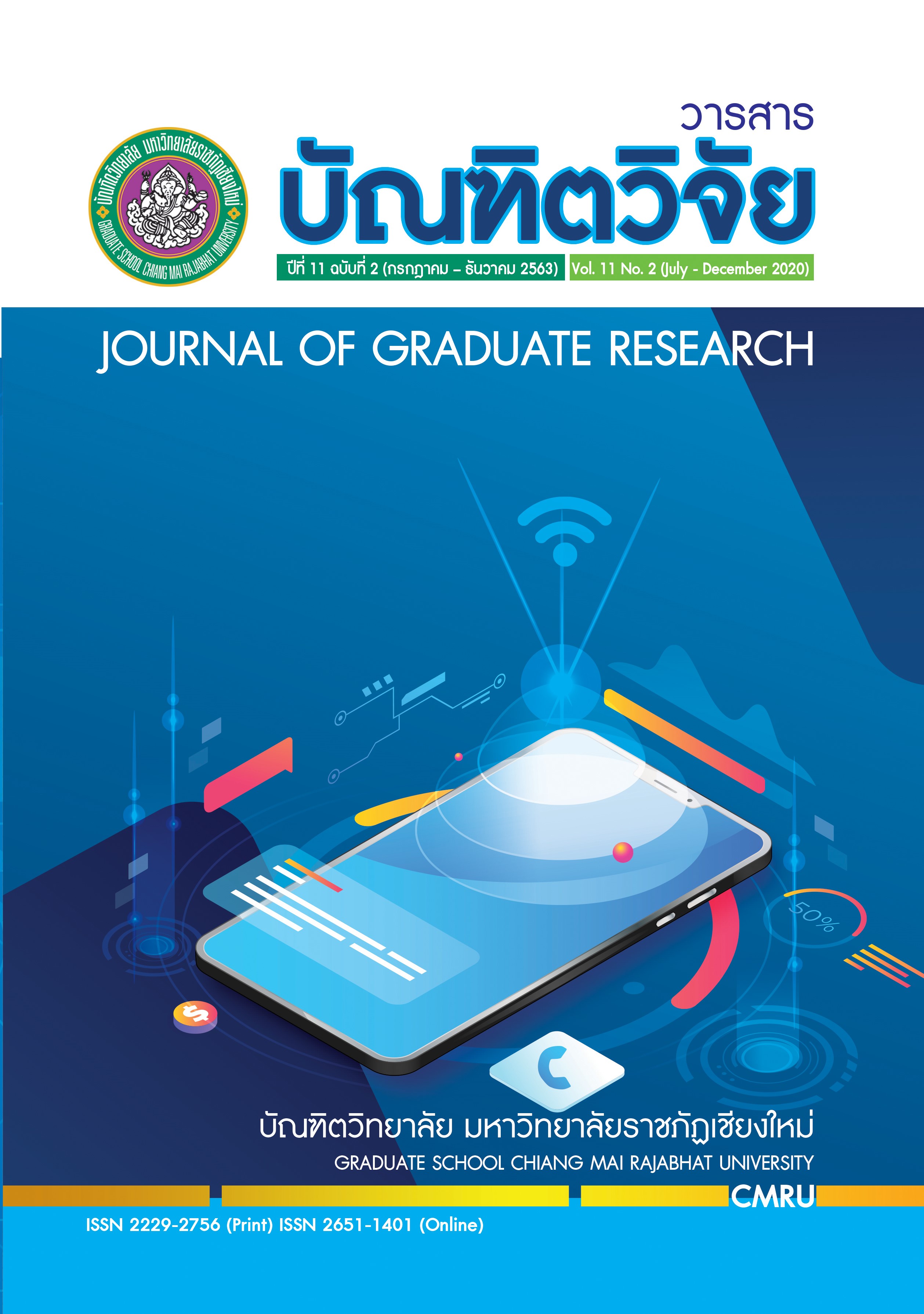The Effects of Peer Feedback Activity Through Canvas Learning Management System on Enhancing of Pannasastra University Students’ English Writing Ability
Main Article Content
Abstract
The objectives of this study were to investigate the effects of using the peer feedback activity through Canvas LMS to enhance EFL students’ writing ability and to explore the students’ opinions on the implementation of peer feedback activity through Canvas LMS. The sample group comprised 54 students of the Intensive English for Academic Purposes Course (IEAP) at Pannasastra University, obtained by applying the purposive sampling method. The samples were divided into two groups: the experimental and the control groups, 27 students for each group. The instruments for data collection included 1) the pre-test and post-test, 2) a questionnaire, and 3) semi-structured interview questions. The data were statistically analyzed for mean, standard deviation, and t-test.
The results revealed that the peer feedback activity through Canvas LMS had positive effects on students’ writing ability in three aspects: 1) increasing their motivation, 2) raising their awareness on grammar and spelling issues, and 3) facilitating classroom management and providing students their own space of learning. Therefore, this activity can be useful for implementing in the English writing class, particularly in the EFL context similar to the context of this study.
Downloads
Article Details
References
Baepler, P. (2015). The Canvas learning management system: Instructor and student experience. Center for Educational Innovation, University of Minnesota. Retrieved from https://it.umn.edu/sites/it.umn.edu
Boase-Jelinek, D., Parker, J. & Herrington, J. (2013). Student reflection and learning through peer reviews. Educational Research, 23(2), 119-130.
Bun. T. (2010, February 10). The importance of speaking English. The Phnom Penh Post. Retrieved from https://www.phnompenhpost.com/lift/importance-speaking-english
Canvas. (2019). How do I use peer review assignments in a course? Retrieved from
https://community.canvaslms.com/docs/DOC-10256-4152719640
Chang, C, Y. (2016). Two decades of research in L2 peer review. Journal of Writing Research, 8, 81–117.
Crossman, J. M., & Kite, S.L. (2012). Facilitating improved writing among students through directed peer review. Active Learning in Higher Education, 13(3), 219-229.
Fournier, J., Cruz, S., & Roberts, K. (2018). Canvas 2017: Evaluation report: Academic experience design & delivery, information of Technology University of Washington. Retrieved from https://itconnect.uw.edu
Igawa, K. (2008). English language and its education in Cambodia, a country in transition. Shitennoji University Bulletin, 46, 343-369.
Ismail, N., Hussin, S., & Darus, S. (2012). ESL tertiary students' writing problems and needs: suggested elements for an additional online writing program (IQ-Write) for the BEL 311 course. International Journal of Learning, 18(9), 69-80.
Irvine, A. K. (2015). Increased social connectedness through digital peer learning. Retrieved from https://www.instructure.com/canvas/pdf/social-connectedness
Johnson, A. M., Jacovina, M. E., Russell, D. E., & Soto, C. M. (2016). Challenges and solutions when using technologies in the classroom. Adaptive educational technologies for literacy instruction. New York: Taylor & Francis.
Kurihara, N. (2017). Do peer reviews help improve student writing abilities in an EFL high school classroom?. TESOL Journal, 8(1), 450-470.
Liu, P. (2016). Technology integration in elementary classrooms: Teaching practices of student teachers. Australian Journal of Teacher Education, 41(3), 87-104.
Mantiri, F. (2014). Multimedia and technology in learning. Universal Journal of Educational Research, 2(9), 589-592.
Ngun, R. (2013). Challenges faced by Cambodian students in writing English at advanced level: A case study of BELTEI International Institute. (Master’s thesis, Arts in Teaching English to Speakers of Other Languages BELTEI International Institute). Retrieved from https://www.beltei.edu.kh/biue
Nguyen, T. T. L. (2019). Implementing peer-feedback in paragraph-writing classes at a Thai university. Knowledge Mobilization in TESOL, 1, 30-42.
Rahimi, M., & Yadollahi, S. (2011). Foreign language learning attitude as a predictor of attitudes towards computer-assisted language learning. Procedia Computer Science, 3, 167-174.
Ragupathi, K. (2013). Collaborative learning using Google Docs & Maps: By Chris McMorran. Technology
in Pedagogy,15, 1-8.
Rao, B. M. (2014). Use of media as an instructional tool in English language teaching (ELT) at undergraduate level. International Journal of English and Literature, 1, 141-143.
Ruegg, R. (2015). The relative effects of peer and teacher feedback on improvement in EFL students’ writing ability. Linguistics and Education, 29, 73-82.
Sandolo, L. (2010). How can the use of technology enhance writing in the classroom? (Master’s thesis, Literacy Education St. John Fisher College). Retrieved from https://fisherpub.sjfc.edu
Smith, D. (2017). Collaborative peer feedback. International Conference on Educational Technologies, 1, 183-186.
Somara, S. (2014). Cambodian EFL students’ perceptions on the effects of communicative language teaching (CLT) on their spoken English and responses: A case study at a training institute in Phnom Penh (Master’s thesis, Educational Administration and Leadership Royal University of Phnom Penh, Cambodia). Retrieved from https://www.tci-thaijo.org
Sullivan, D., & Watson, S. (2015). Peer assessment within hybrid and online courses: Students’ view of its potential and performance. Journal of Educational Issues, 1, 1-18.
Wakabayashi, R. (2013). The effects of the peer feedback process on reviewer’s own writing. English Language Teaching, 6(9), 117-187.
Yana, D. (2018). The usage of schoology and canvas as media based blended learning. Anglo-saxon, 9, 82-91.


